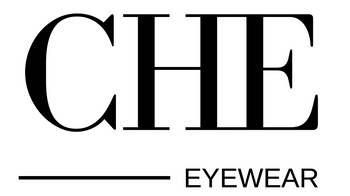
All About Lenses!

Let’s talk lenses! We know it can be really confusing when getting a new pair of glasses because there are so many different lens types available! Is the more expensive one really worth it? What really is an anti-reflective coating? We are about to answer all your questions, so that next time you have to get new lenses, you already know which extras you really need!
Lens Types
Single vision lenses: These provide one viewing range only, whether that be near, far or intermediate.

Progressive/multifocal lenses: These provide three main viewing points, incorporating distance, intermediate and near viewing all in the one lens. These are perfect for those of you who can’t see far away, but also can’t see up close, and don’t want to have to keep taking your glasses off so that you can watch TV and send a message on your phone at the same time. A progressive lens is designed for everyday use and offers a perfect combination of price and benefit for those who require it.
High index lenses: These are perfect for more complicated prescriptions, as they remove the undesirable thickness that comes with a strong lens. If your prescription is not complicated and on the lower side, the thickness of a regular lens is not seen and a high index lens is not necessary.
Lens Additions
Lens additions are all those coatings, tints and edges that are sprung on you when choosing lenses, that you never really know if you need. The extra money doesn’t always sound worth it when you’re hearing it on the spot, but we hope that by reading about it in advance, you can have a better understanding of what is worth it for you and what isn’t!
UV Filter: Protecting your eyes from the sun, this lens works as a sunglass whilst still looking like a spectacle lens. This is suitable to people who spend a lot of time outdoors and would prefer a protective spectacle lens rather than a sunglass lens.
Blue light: This is an anti-reflective coating that helps cancel out that dangerous blue light that emits from our digital devices. The blue light we are exposed to with regular screen time is harmful to our eyes, damaging the retina and pushing our eyes to age quicker. Many people complain of dry eyes, headaches, blurriness and pain when exposed to devices for an extended period of time, and the blue light lens reduces that by slightly changing the colour of what the wearer sees, creating a softer light. Whilst this colour change is very minor and not noticeable to the everyday wearer, this lens may not be suitable to people such as artists or designers who rely on seeing colour in its purest form. However, for the average person, the reduction of blue light allows for a more comfortable and healthier experience.

Polished edges: Suitable for all fine-rimmed frames, polished edges makes the lenses appear clearer and thinner, restoring the aesthetic of the lens and frame together. This is necessary because finer frames will not hide any lens thickness that your lens prescription or size may cause.
Special lenses
These are specific types of lenses available for those who are using their glasses every day and want the best comfort and viewing options possible. People who study or work at a computer may consider a special lens.
Transition lenses: These lenses change colour, being clear indoors like a spectacle lens and dark outdoors like a sunglass. These appeal to those who don’t want to change between glasses and sunglasses when moving indoors and outdoors. There are many types of transition lenses available, depending on the activities they will be used for and the technology best fit for them, not to mention a new and exciting range of available colours.

Extended focus reader lens: This is the perfect lens for those who want to view their phone and computer at the same time, but don’t need to view a TV, sign, or other materials at a distance. This lens has a near focus point (for phones, iPads, tablets) and an intermediate focus point (for computers, laptops) and appeals to users of technology.
Office lens: The office lens appeals to users not only of phones and computers, but of projector screens and people they may be having a conversation with. It is designed for all office activities, such as viewing a computer screen, a presentation, asking a question of a colleague or checking an email on your phone, all whilst wearing the same pair of glasses. This lens is suitable for people who struggle to view all the different focus points around an office with their regular glasses. It is not suitable for people who would like a distance focus point further away than a projector screen, such as people who wear their glasses for driving. These people would be better suited to a multifocal lens.

Anti-fatigue lens: This is a single vision lens that helps relieve symptoms of eye strain and tiredness such as headaches, blurred vision and stinging eyes. It is equipped with blue light coating to avoid any eye strain from digital devices, one of the most common causes of eye fatigue. It is best suited to those who are long-sighted and require their glasses for reading or computer work. Users will find the anti-fatigue lens just as comfortable and versatile as a regular single vision lens.
This is just an overview of some of the main types of lenses you may be offered when choosing your next pair of glasses. Please do not hesitate to contact us or your local optometrist for more information, as every glasses wearer is different.


















